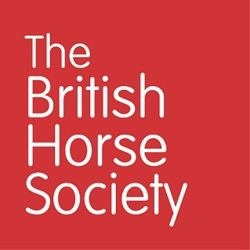Stage 2 Coach
| Learning Outcome | Assessment Criteria | Guidance on the Content | Assessment Method |
|---|---|---|---|
| 1. Understand the roles and responsibilities of a coach | 1.1 Explain the roles of a coach |
Roles to include:
|
Discussion |
| 1.2 Describe the responsibilities of a coach |
Responsibilities to include:
|
Discussion | |
| 1.3 Describe legal requirements for coaching horse riding |
Legal requirements to include:
|
Discussion | |
| 1.4 Explain a range of factors to consider when matching a horse with a rider |
Range = 2 or more Factors to include:
|
Discussion | |
| 2. Understand rider needs | 2.1 Explain the needs of different types of riders |
Types of riders to include:
|
Discussion |
| 2.2 Explain how the learning process may affect a rider’s skill development |
Learning process to include:
|
Discussion | |
| 2.3 Explain factors that may affect rider development |
Factors to include:
|
Discussion | |
| 3. Be able to coach safely | 3.1 Demonstrate regard for safety |
Safety considerations to include:
|
Observation |
| 4. Be able to demonstrate lesson management skills | 4.1 Demonstrate effective communication skills |
Communication skills to include:
|
Observation |
| 4.2 Demonstrate effective behaviour management skills |
Behaviour management to include:
|
Observation | |
| 4.3 Demonstrate effective time management skills |
Time management to include:
|
Observation | |
| 5. Be able to coach a lead rein lesson | 5.1 Produce a lesson plan |
Plan for a beginner rider:
|
Discussion |
| 5.2 Describe the process of coaching a beginner rider |
Process to include:
|
Discussion | |
| 5.3 Coach a lead rein lesson |
Lead rein lesson to include:
|
Observation and discussion | |
| 6. Be able to coach a lunge lesson | 6.1 Produce a lesson plan |
Plan for a novice rider:
|
Discussion |
| 6.2 Explain how to develop riding skills |
Riding skills to include:
|
Discussion | |
| 6.3 Coach a lunge lesson |
Lunge lesson to include:
|
Observation | |
| 7. Be able to coach an integrated flatwork and jumping group lesson | 7.1 Produce a lesson plan |
Plan for group riders:
|
Discussion |
| 7.2 Coach a group lesson |
Group lesson to include:
|
Observation | |
| 7.3 Coach progressive activities |
Progressive activities to include:
|
Observation | |
| 8. Be able to coach a practical stable management lesson | 8.1 Produce a lesson plan |
Stable management topics may include:
|
Discussion |
| 8.2 Coach a stable management lesson |
Considerations:
|
Observation | |
| 9. Be able to plan for professional development | 9.1 Describe an action plan for own development |
Action plan to include:
|
Discussion |
